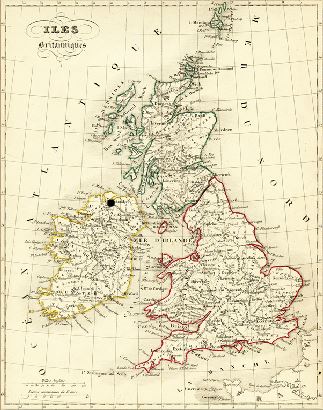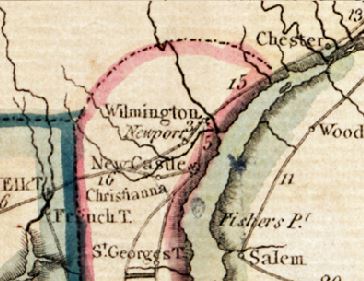 Londonderry
Londonderry
The vast majority of passengers traveling to the Brandywine embarked from Londonderry, Ireland. As early as 1724, emigrants bound for the American colonies traveled from Londonderry to the Delaware port of New Castle.
By the early 19th century, Londonderry had become established as the main port for emigrants from Derry, Donegal, and Tyrone, as well as parts of Antrim and Fermanagh. During the Famine years, as many as 20 ships sailed from Londonderry to Philadelphia each year, with additional ships traveling to New York and Canada.
As steamships became more popular, Liverpool outpaced Londonderry, and Derry's passenger trade began to fall off by 1855,
Liverpool
Fares from Liverpool were frequently less expensive than those from Londonderry, but passengers had to pay for transport to Liverpool as well as any extra expenses incurred along the way. Irish passengers first had to brave the day-long passage across the Irish Sea.
Passengers were crammed on the largely unregulated vessels and sometimes had to stand on the decks for the entire trip, even in in storms. Seasickness was widespread and safety provisions, such as lifeboat and life jackets, were almost nonexistent.
Once passengers reached Liverpool, they were at the mercy of the city's many corrupt agents and con men. Decent accommodations were difficult to find, and many individuals quickly slid into poverty if forced to wait too long for their ship to sail. Despite these significant problems, Liverpool rapidly rose to become Great Britain's largest port of emigration in the wake of the Famine.
Philadelphia
Most of the Irish immigrants bound for Delaware landed at the Port of Philadelphia. Trade between Londonderry and Philadelphia began in the 18th century when ships traveled from Philadelphia to Ireland loaded with flaxseed and returned carrying immigrants.
By 1729, over 1,000 immigrants from the norther part of Ireland landed in Philadelphia each year, making up more than two-thirds of the total immigrant traffic through the port. In the 19th century, dedicated shipping lines were established between Philadelphia and both Londonderry and Liverpool.
Image: Portion of map of the American coast from Lynhaven Bay to Narraganset Bay, by John Melish, 1813.
 New Castle, Wilmington, and Others
New Castle, Wilmington, and Others
Robert Taylor periodically landed his immigrants at New Castle or Wilmington, Delaware instead of Philadelphia in order to avoid paying emigrant taxes. During the early 1830s he told DuPont,
"It is my intention this season as last to land these passengers at Wilmington, unless our emigrant tax should be reduced, in which case I shall bring the ships up to Philadelphia at once."
Some passengers sponsored by DuPont workers came through other ports as well. A sizable minority entered through New York, and there is evidence that a few others landed in Baltimore or even Canada.

